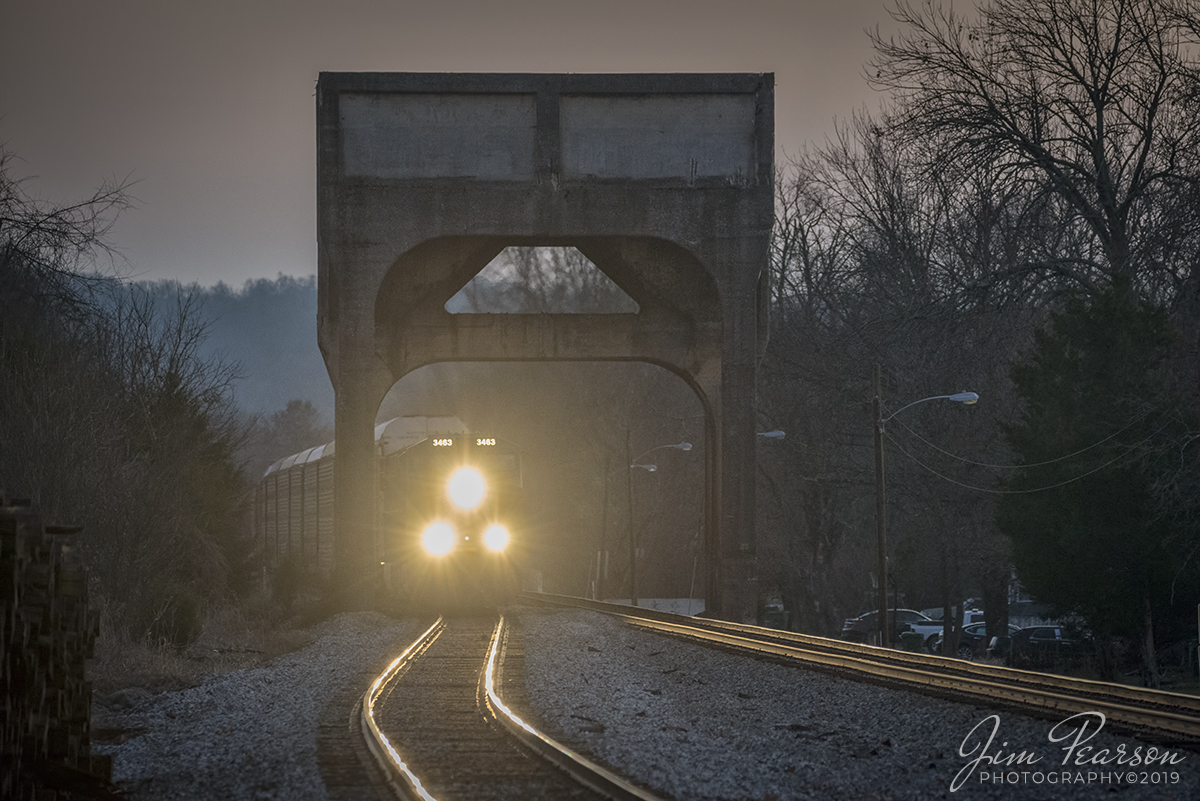December 7, 2019 – As the last light of the day fades, CSXT 3463 leads CSX Q224 under the old coaling tower at Lebanon Junction, Kentucky as it heads north on the Mainline Subdivision (Short Line).
According to Wikipedia: Lebanon Junction sprang into existence from a railroad switching point that split Louisville and Nashville Railroad (now CSX Transportation) traffic off the mainline to the Lebanon branch that ended in Lebanon, Kentucky. This branch was completed no later than March 8, 1858, and the town grew out of a need for railroad workers to man the terminal and switching station.
A coaling tower, coal stage or coaling station is a facility used to load coal as fuel into railway steam locomotives. Coaling towers were often sited at motive power depots or locomotive maintenance shops.
Coaling towers were constructed of wood, steel-reinforced concrete, or steel. In almost all cases coaling stations used a gravity fed method, with one or more large storage bunkers for the coal elevated on columns above the railway tracks, from which the coal could be released to slide down a chute into the waiting locomotive’s coal storage area. The method of lifting the bulk coal into the storage bin varied. The coal usually was dropped from a hopper car into a pit below tracks adjacent to the tower. From the pit a conveyor-type system used a chain of motor-driven buckets to raise the coal to the top of the tower where it would be dumped into the storage bin; a skip-hoist system lifted a single large bin for the same purpose. Some facilities lifted entire railway coal trucks or wagons. Sanding pipes were often mounted on coaling towers to allow simultaneous replenishment of a locomotive’s sand box.
As railroads transitioned from the use of steam locomotives to the use of diesel locomotives in the 1950s the need for coaling towers ended. Many reinforced concrete towers remain in place if they do not interfere with operations due to the high cost of demolition incurred with these massive structures.

